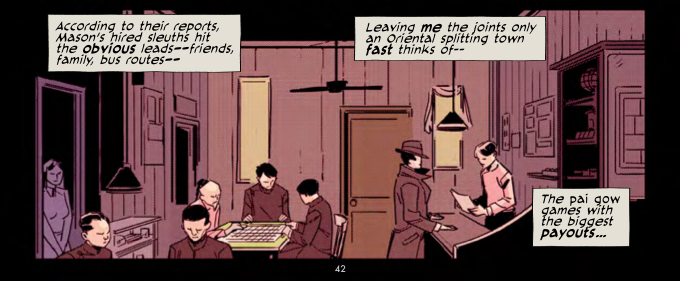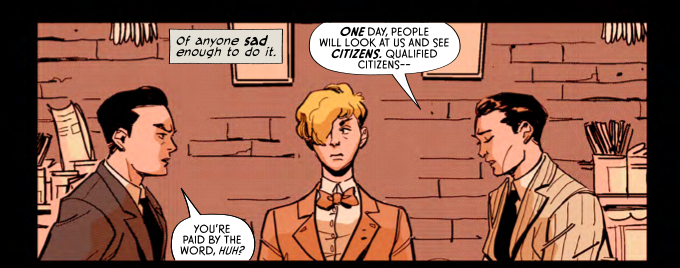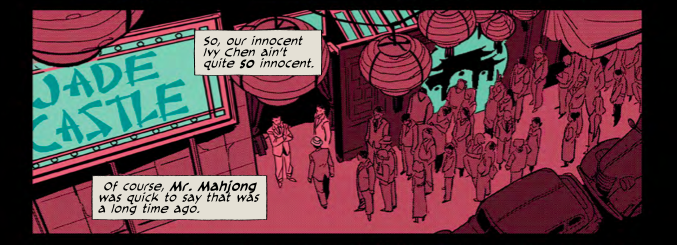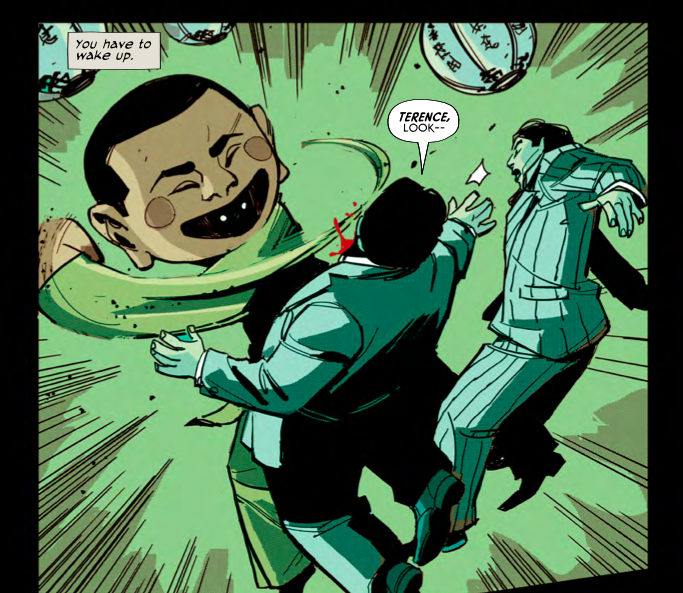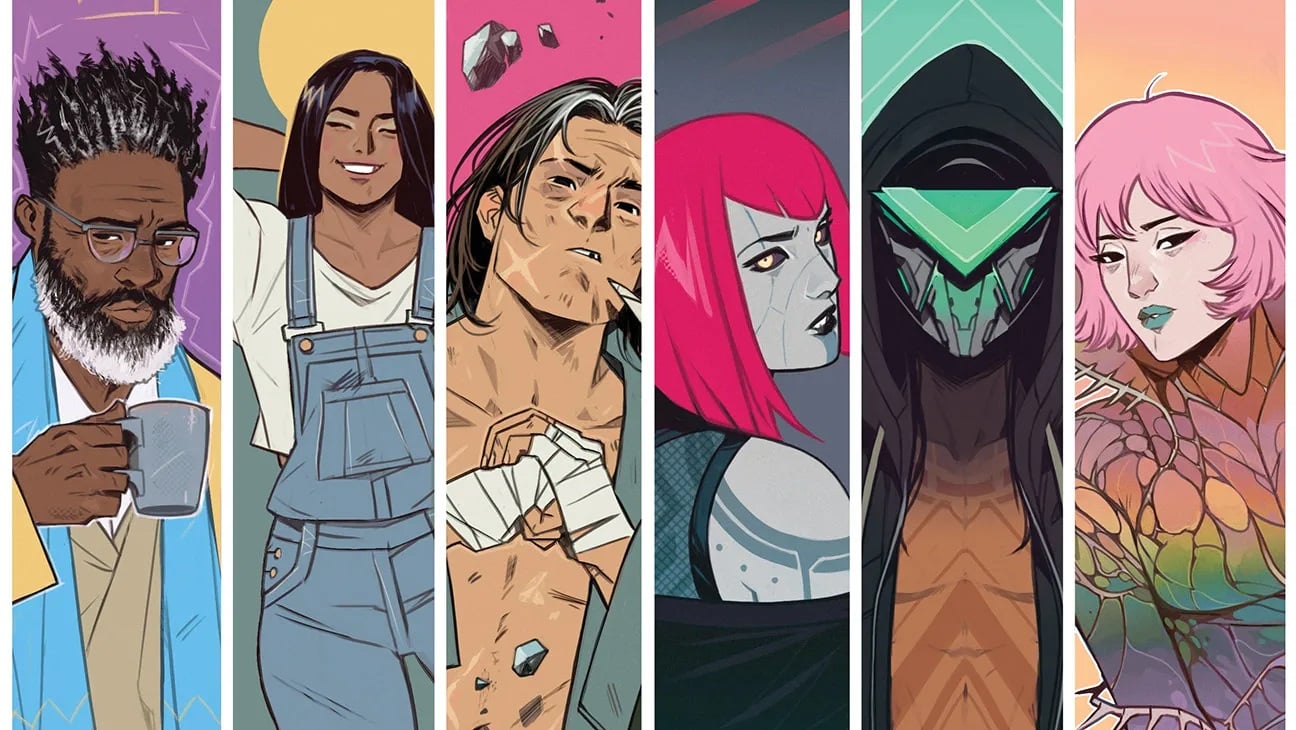 The Good Asian #2
The Good Asian #2
Written by: Pornsak Pichetshote
Art by: Alexandre Tefenkgi
Colors by: Lee Loughridge
Letters by: Jeff Powell
Published by: Image Comics
At the conclusion of The Good Asian #1, a letter from series writer and creator Pornsak Pichetshote promised that subsequent issues would include back matter that explored the historical realities of life in 1930s American for Asian-Americans.
With the second issue, The Good Asian delivers on that promise, and the three pages of dense prose and full-color photographs that follow the comic are well worth the wait. This information demonstrates how Grant Din, the historical consultant on the series, is an essential element of The Good Asian’s All-Star lineup, and illuminates how carefully the creative team behind this series has prepared in order to convey this Chinatown Noir tale accurately – a fact that is obvious on every page of this sophomore issue.
Essential Historical Context
Make no mistake: both issues of The Good Asian are engaging in and of themselves. However, the historical context added by the back matter in The Good Asian #2 will send you back to the first page of the first issue, where you will find that the Angel Island scenes have been entirely re-contextualized thanks to the nonfiction notes in the second issue’s back matter.
And not only does the second issue’s back matter cover Angel Island, it also includes details on the chop suey circuit. In The Good Asian #2, a sequence is set at the Jade Castle, which is a fictional establishment, but as the historical notes explain, the chop suey circuit it represents were very real. These Chinatown nightclubs sought to make Asian faces more palatable to white audiences, a strategy that ultimately provided an avenue for some Chinese Americans to gain social capital via entertainment at a time when that might otherwise prove impossible.
While the reader will appreciate the sequence set at the Jade Castle during the first read-through, these additional details shine a whole new light on those scenes – not to mention the narrative and thematic purpose they serve in The Good Asian’s narrative. Furthermore, the inclusion of these notes bring to light historical realities that you probably weren’t taught in your high school history classes – and with the promise of more historical notes to come, it seems like this series will be uncovering hidden truths both on and off the comic book page.
Chinatown Noir
As far as the detective genre elements of The Good Asian #2 are concerned, they continue to be well utilized, as with the first issue. Beginning where we left off in issue one lends plenty of dramatic thrust to the story, and we’re soon introduced to another character who is subjected to Edison Hawk’s relentless perspective.
Scenes where the detective investigates by subtly (or not so subtly) interrogating possible suspects are an important element of the detective genre, and we see several of those in this issue, all of which are well executed.
Throughout the issue, Lee Loughridge uses color to great effect, conveying changes in time and space and always imparting plenty of noir-ish style. Jeff Powell’s lettering continues to use an interesting system, allowing the shapes of dialogue balloons and a subtle shift in font to denote which language is being spoken (for more on this, check out The Beat’s interview with Pichetshote and Alexandre Tefenkgi, which includes an image of the awesome Annie Wu variant cover for The Good Asian #2).
And while every page of the dense issue is gorgeously rendered, transporting you to 1936 San Francisco, Tefenkgi’s two-age splash at the center of this issue captures the spirit of the chop suey circuit so well you’ll be searching your pockets for a Jade Garden matchbook after you’ve closed the cover.
A One-Two Punch
One word of caution: this issue builds on the foundation of the first, and readers who did not read The Good Asian #1 will find themselves lost among the many unspooling threads of the narrative. However, this is just the nature of the complicated historical detective tale, and it’s worth seeking out both issues in order to gather all the clues you’ll need to solve the mystery.
The Good Asian #2
If you haven’t had a chance to pick up The Good Asian #1 yet, these two issues are an incredible pairing, and come highly recommended. Read both issues, then read the back matter in The Good Asian #2 and re-read both issues again.
The Good Asian #2 is available now at your local comic shop.


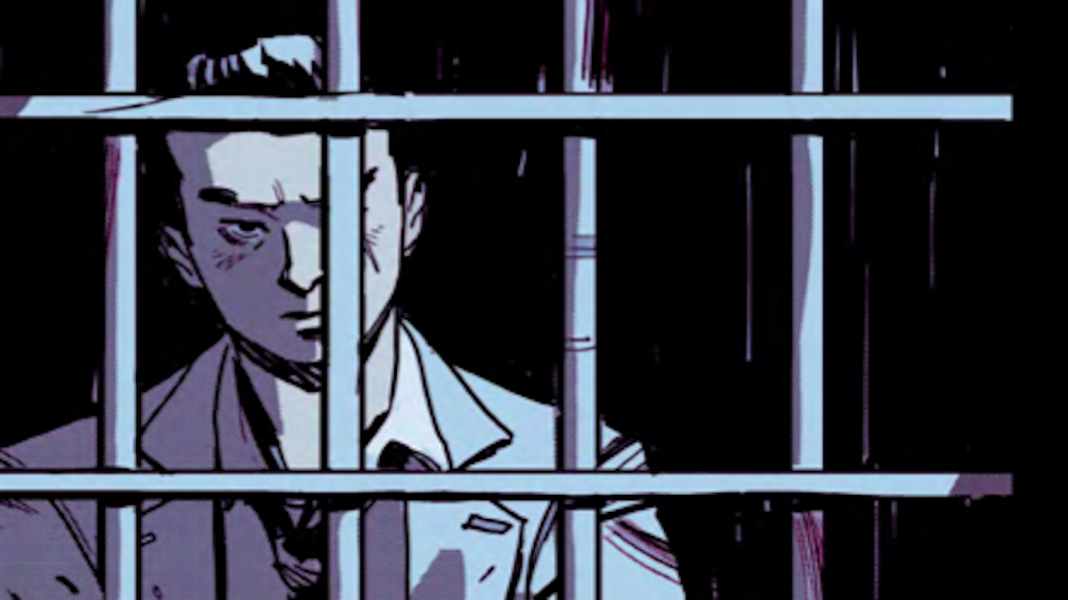
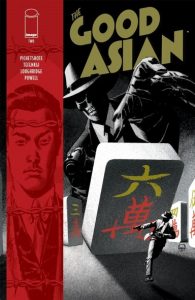 The Good Asian #2
The Good Asian #2